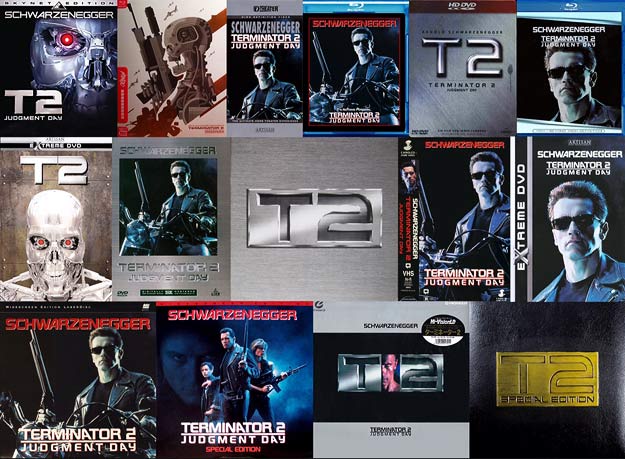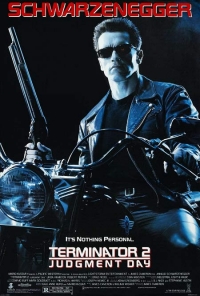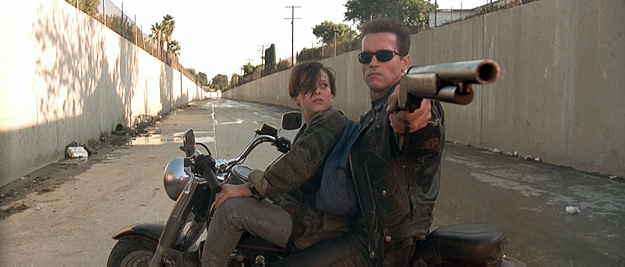
THE INTERVIEW
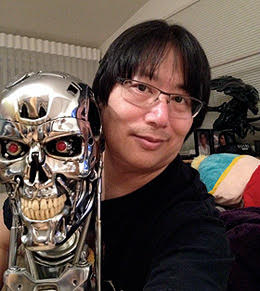 Van Ling is a freelance visual effects supervisor, producer, writer, editor, consultant, and digital artist. Van is a summa cum laude graduate of the University of Southern California’s School of Cinema-Television, and he began his film career as a creative/technical/research/VFX assistant to James Cameron on The Abyss, later serving for several years as the head of production for Cameron’s production company, Lightstorm Entertainment. He later formed (with Casey Cannon) the visual effects company Banned from the Ranch Entertainment, where he was involved from 1994 through 1999. Van’s diverse and award-winning career has included producing added-value content for DVD and Blu-ray (and even as far back as LaserDisc), including material found on the discs of several James Cameron movies including The Terminator, Terminator 2: Judgment Day, The Abyss, and Titanic, and others such as Field of Dreams. His graphics work can be seen in the Video Essentials calibration disc and in Disney theme park attractions such as Star Tours: The Adventure Continues, the EPCOT Test Track and The Legend of Jack Sparrow. Passengers aboard the Disney Cruise Ships can see his multiscreen animated city panoramas in the Skyline Lounge. His VFX work can be seen in numerous films including The Abyss, Terminator 2, Twister, Starship Troopers, Titanic, and Doctor Dolittle (1998), in trailers for THX and DTS, as well as in DVD & Blu-ray menu design, including those found on the discs for Star Wars, The Hunger Games, Independence Day, and Terminator 2. Attentive viewers might even spot Van as an actor in Terminator 2, AlienNation and Titanic. Van is also an active member of the Visual Effects Branch of the Academy of Motion Picture Arts and Sciences, the Producers Guild of America and the Visual Effects Society. He has served six terms on the VES Board of Directors, and is active on the Archives, Vision and Annual Membership Meeting Committees, co-Chairing the latter. His VES 50 Most Influential VFX Films compilation and annual VFX-film montages have been inspiring artists at VES events around the world.
Van Ling is a freelance visual effects supervisor, producer, writer, editor, consultant, and digital artist. Van is a summa cum laude graduate of the University of Southern California’s School of Cinema-Television, and he began his film career as a creative/technical/research/VFX assistant to James Cameron on The Abyss, later serving for several years as the head of production for Cameron’s production company, Lightstorm Entertainment. He later formed (with Casey Cannon) the visual effects company Banned from the Ranch Entertainment, where he was involved from 1994 through 1999. Van’s diverse and award-winning career has included producing added-value content for DVD and Blu-ray (and even as far back as LaserDisc), including material found on the discs of several James Cameron movies including The Terminator, Terminator 2: Judgment Day, The Abyss, and Titanic, and others such as Field of Dreams. His graphics work can be seen in the Video Essentials calibration disc and in Disney theme park attractions such as Star Tours: The Adventure Continues, the EPCOT Test Track and The Legend of Jack Sparrow. Passengers aboard the Disney Cruise Ships can see his multiscreen animated city panoramas in the Skyline Lounge. His VFX work can be seen in numerous films including The Abyss, Terminator 2, Twister, Starship Troopers, Titanic, and Doctor Dolittle (1998), in trailers for THX and DTS, as well as in DVD & Blu-ray menu design, including those found on the discs for Star Wars, The Hunger Games, Independence Day, and Terminator 2. Attentive viewers might even spot Van as an actor in Terminator 2, AlienNation and Titanic. Van is also an active member of the Visual Effects Branch of the Academy of Motion Picture Arts and Sciences, the Producers Guild of America and the Visual Effects Society. He has served six terms on the VES Board of Directors, and is active on the Archives, Vision and Annual Membership Meeting Committees, co-Chairing the latter. His VES 50 Most Influential VFX Films compilation and annual VFX-film montages have been inspiring artists at VES events around the world.
Van kindly spoke to The Bits about his time working for James Cameron and the popularity and significance of Terminator 2.
Michael Coate (The Digital Bits): In what way is Terminator 2: Judgment Day worthy of celebration on its 25th anniversary?
Van Ling: I feel it was and still is a watershed film in both for its use of visual effects and for its effective storytelling in an action genre not generally noted for having emotion and thrills blended in such a successful way. It’s almost universally loved, in the same way that say Ghostbusters and Back to the Future are remembered, with memorable lines and iconic imagery and sequences… and the fact that it’s a big-budget sequel to what was essentially a low-budget indie film makes it all the more rare. It’s basically The Empire Strikes Back of the Terminator films… it broadened the world and characters, added more emotional depth in continuing the story, and upped the visual stakes. Although one might argue it did Empire one better by actually having an ending, rather than being a middle act of a saga that had to conclude in a subsequent film. There was no narrative need for subsequent films other than financial considerations. That’s why, to me, The Terminator and Terminator 2: Judgment Day are canon, and the rest are just fan fiction.
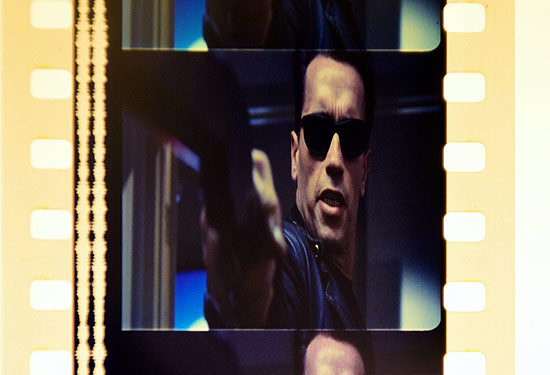
Coate: Can you describe what it was like to see the finished movie for the first time?
Ling: I was very fortunate to have had a front seat on the ground floor of the development and making of the film, thanks to James Cameron. On the day we met in November of 1986, he actually told me the basic premise of the film, and that was the day I count as my first day on the show. But I didn’t start working with him officially until a few weeks later, when he hired me as his researcher on The Abyss. And for the next half-decade, I was intimately involved in the making of both that film and T2, but I reckon I would count the first time I really saw T2 was at the first full-audience public screening of the completed film in May of 1991… it was a studio screening at the Cary Grant Theater on the Sony lot, and it was packed with studio personnel, their families, friends and various other general audience members. And it was the most exhilarating and gratifying screening I had ever experienced in my life. People were enjoying the hell out of the film from the get-go, but when the T-1000 got shot in the mall hallway and then healed and got up again, the audience when absolutely crazy, screaming and cheering. I had been working on it with Jim and the team for years by that point, and I knew what a great film it was and how pioneering the VFX work was, but at that moment, I just got to feel what it was like to be an audience member seeing something mind-blowing for the first time.
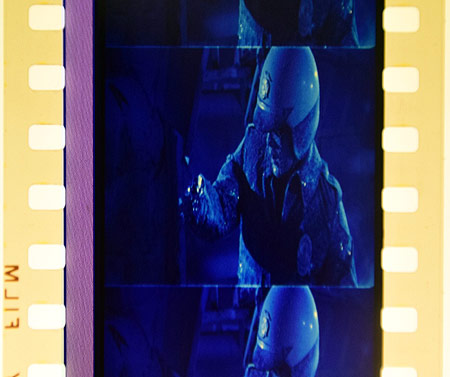
Coate: Which do you think is better: the theatrical cut or longer director’s cut?
Ling: I always have to correct people when they ask this question: calling one version the “director’s cut” implies that the other version is somehow NOT the director’s approved version, that it is compromised in some way. BOTH versions are the “director’s cut,” as Jim Cameron had full approval over the two cuts; that’s why we specifically called it the “Special Edition.” It’s just that the Theatrical version was shorter and more tightly-paced to be able to run more screenings a day in theaters, while the Special Edition had more narrative depth and a slightly slower pace. As the producer of the Special Edition version, I can appreciate both cuts for their purposes, but I like the longer cut particularly for the “Resetting the Switch” scene in the middle.
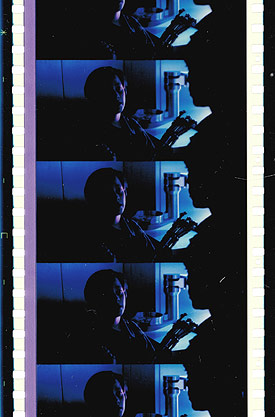 Coate: It’s been many, many years since you produced the exhaustive supplemental material for the T2 LaserDisc boxed set. Is there anything else you would like to do special edition-wise should another opportunity arise?
Coate: It’s been many, many years since you produced the exhaustive supplemental material for the T2 LaserDisc boxed set. Is there anything else you would like to do special edition-wise should another opportunity arise?
Ling: I once calculated that as of 2015, I have fully-produced or had been involved with something like a dozen releases of the film to home video, and each time I tried to add something new… so I think I may have strip-mined that quarry bare! Although the few things I would have liked to have included over the years but never got a chance due to licensing or clearance issues were: the T2 crew video (it was a private-viewing-only video cut to music that would require expensive clearances); some of the more fabled auditions we had for John Connor and the T-1000 (with Macauley Culkin and Billy Idol, respectively); and the actual film segments from the T2:3D Battle Across Time theme park attraction (which may be possible now that the attraction is gone from the Universal theme parks). And the famed Guns ’N’ Roses T2 music video directed by Stan Winston hasn’t been on any of the releases since the original Special Edition LaserDisc, because the band’s music label understandably wanted a ton of money to re-license it for DVD/home video.
Coate: Where do you think T2 ranks among director James Cameron’s body of work?
Ling: This is a really tough question, since nearly everything in Jim’s body of work is pretty spectacular! I would say it is certainly in the top four, along with Aliens, The Terminator and Titanic. I’m not sure which order I’d put those in, though.
Coate: What is the legacy of T2?
Ling: T2 was to me a watershed film in the history of visual effects because it was a great blend of old and new techniques that had to work seamlessly together to create a key character that could not have been done without the effects. A lot of people don’t realize that there were only about three to four dozen digital shots in the entire film… the rest are all done with traditional VFX techniques like puppets, miniatures, prosthetics, practical explosions and even stop-motion. It built upon the things we did and learned on The Abyss and paved the way for computer graphics to go to the next level on Jurassic Park. One of the things that we did in T2 that I think had the biggest impact on the entire movie industry was the full-on use of digital composites in the film, and not only for ILM’s three dozen T-1000 shots. PDI did some seamless digital wire removals, scratch removals and signage flops in which we were able to literally alter the image invisibly in ways that could not have been done without serious generational loss without the use of digital compositing. Some prior films had done digital image manipulation before (we had ONE digital composite in The Abyss), but I believe it was on T2 that it became a truly practical, realistically-affordable tool in the VFX arsenal. So hidden underneath all the cool morphing, the CG liquid metal character animation and the great Stan Winston gags, the real legacy-making revolution that came out of T2 was in my opinion the practical use of digital compositing and digital image manipulation, and those techniques are now the most commonplace VFX work being done in every movie in every genre. And it showed that digital visual effects were a technique that could be used on any type of project — historical, contemporary, romantic comedy, anything — and not just science fiction or action films… . And most importantly, T2 has stood the test of time because it’s a hell of a great ride as a movie, which is the ultimate legacy for any film. But maybe I’m a little biased.
Coate: Thank you, Van, for sharing your thoughts about Terminator 2 on the occasion of its 25th anniversary.
--T2--

SPECIAL THANKS
Al Alvarez, Don Beelik, Rachel Bernstein, Bobby Henderson, Bill Kretzel, Joanne Lammers, Van Ling, Monty Marin, Brad Miller, Cliff Stephenson, J. Thomas, Kurt Wahlner, Sean Weitzel, and to all of the librarians who helped with the research for this project, and to the Academy of Motion Picture Arts and Sciences’ Margaret Herrick Library and Fairbanks Center for Motion Picture Study.
SOURCES/REFERENCES
Primary references for this project were promotional material published in daily newspapers archived digitally and/or on microfilm plus numerous articles published in film industry trade publications Billboard, Boxoffice, The Hollywood Reporter, and Variety.

SELECTED IMAGES
Copyright Artisan Entertainment / Canal+ / Carolco Pictures / Lightstorm Entertainment / Lionsgate Home Entertainment / LIVE Home Video / Pacific Western / Pioneer Entertainment / TriStar Pictures
All figures and data included in this article pertain to the United States and Canada except where stated otherwise.
IN MEMORIAM
- Mali Finn (Casting), 1938-2007
- Stan Winston (Special Makeup Producer), 1946-2008
- Joseph Viskocil (Special Effects Supervisor), 1952-2014
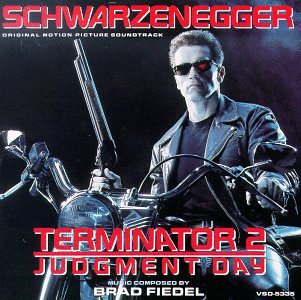
- Michael Coate
Michael Coate can be reached via e-mail through this link.
